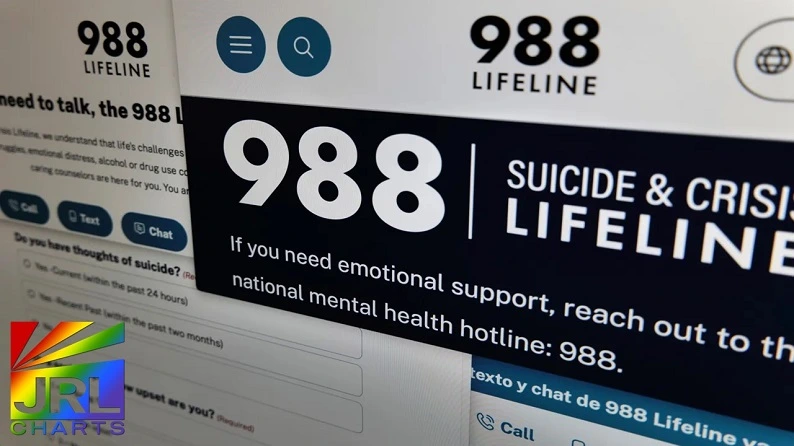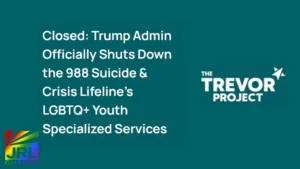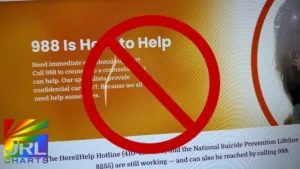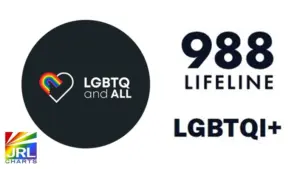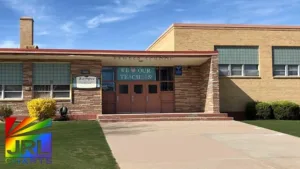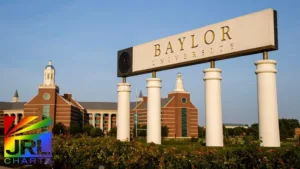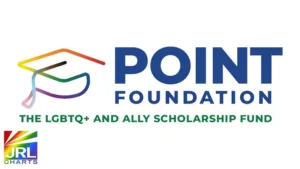By: Paul Goldberg, Senior Editor | JRL CHARTS – LGBT Politics USA
LAS VEGAS — (July 16, 2025) — In a move that has sparked outrage among mental health advocates, the Substance Abuse and Mental Health Services Administration (SAMHSA) confirmed it will eliminate the specialized LGBTQ youth support option on the 988 Suicide and Crisis Lifeline, effective Thursday, July 17.
Related Coverage Links on JRL CHARTS:
• Get the Latest in LGBT Politics USA Exclusively on JRL CHARTS
• Breaking Military News involving LGBTQ Service Members and Security
• LGBT Politics Europe – Updates on Hate Crimes, Judicial Rulings
• Stay Up to Date on the Happenings in LGBT Politics Asia
For nearly two years, LGBTQ youth could select “Option 3” to speak with counselors trained in LGBTQ-specific mental health and suicide prevention. That service will be dissolved under a new federal policy that aims to “serve all help seekers” through integrated, non-specialized care.
“We don’t need generic health services,” said Perry N. Halkitis, dean of the Rutgers School of Public Health. “We have specific needs.”【1】
What’s Changing — And Why Experts Are Concerned
SAMHSA’s June statement assured that “everyone who contacts the 988 Lifeline will continue to receive access to skilled, culturally competent crisis counselors.” However, researchers say removing targeted support will endanger LGBTQ youth—one of the highest-risk groups for suicide in America.
According to The Trevor Project:
-
LGBTQ youth are over 4 times more likely to attempt suicide than their peers.
-
Over 1.8 million LGBTQ youth seriously consider suicide annually.
-
A suicide attempt occurs every 45 seconds among this group.【2】
Critics argue that universal coverage cannot substitute for culturally competent care.
“Just like a woman goes to an OB-GYN,” Halkitis explained, “LGBTQ individuals need providers who understand our community.”【1】
Suicide Rates, Pandemic Fallout, and the Equity Gap
The Centers for Disease Control and Prevention (CDC) and National Institute of Mental Health (NIMH) have flagged a youth mental health crisis intensified by the COVID-19 pandemic. Suicide remains the:
-
2nd leading cause of death for youth aged 10–14
-
3rd leading cause for those aged 15–24【3】
While the government cites equity in providing services for all, many say this move reduces accessibility for those who most need culturally affirming crisis care.
A January 2025 research paper found that healthcare outcomes improve when providers use inclusive language, understand risks unique to LGBTQ patients, and are trained in the community’s needs【4】.
Why the Decision Matters Now
Mental Health America emphasizes that the federal government both funds and regulates mental health infrastructure nationwide. By pulling back on LGBTQ-specific options, the government could:
-
Set a precedent for broad-stroke care over specialized services
-
Diminish trust in public health tools for queer youth
-
Undermine equity-focused efforts advanced since the pandemic
Politics, Policy, and LGBTQ Youth Lives
The 988 Lifeline was codified under bipartisan legislation signed by Donald Trump in 2020, which included requirements for trained LGBTQ support staff. That support now appears to be reversed by federal restructuring.
As of this writing, the 988 system has handled over 16 million contacts, with more than 1.3 million of those tied to LGBTQ services. Despite these numbers, the lifeline’s LGBTQ option will end Thursday.
Footnotes & Sources:
-
Perry N. Halkitis via Rutgers School of Public Health
-
National Library of Medicine (Jan 2025) – LGBTQ Cultural Competency in Health Care
As the July 17 deadline approaches, advocates warn this shift in 988 Lifeline policy could endanger the very youth it once prioritized.
Stay informed with JRL CHARTS LGBT Politics News — your trusted source for critical updates on LGBTQ mental health and federal policy decisions.
- Damien Vol. 3: At Your Service Goes Viral as Carnal+ Fans Flock to the Hit Series - January 10, 2026
- Supreme Court Asked to Block California’s Trans Student Non-Outing Law - January 10, 2026
- Williams Trading Unveils This Week’s Hottest New Pleasure Product Arrivals - January 9, 2026
Affiliate Disclosure: JRL CHARTS is a digital news and media platform. We do not host, stream, or sell adult content. Some outbound links may contain affiliate tracking to licensed studio-owned platforms (e.g., LatinBoyz, AEBN, BiLatin Men). These links lead to legal, age-gated distributors and are provided strictly for editorial and informational purposes only.


